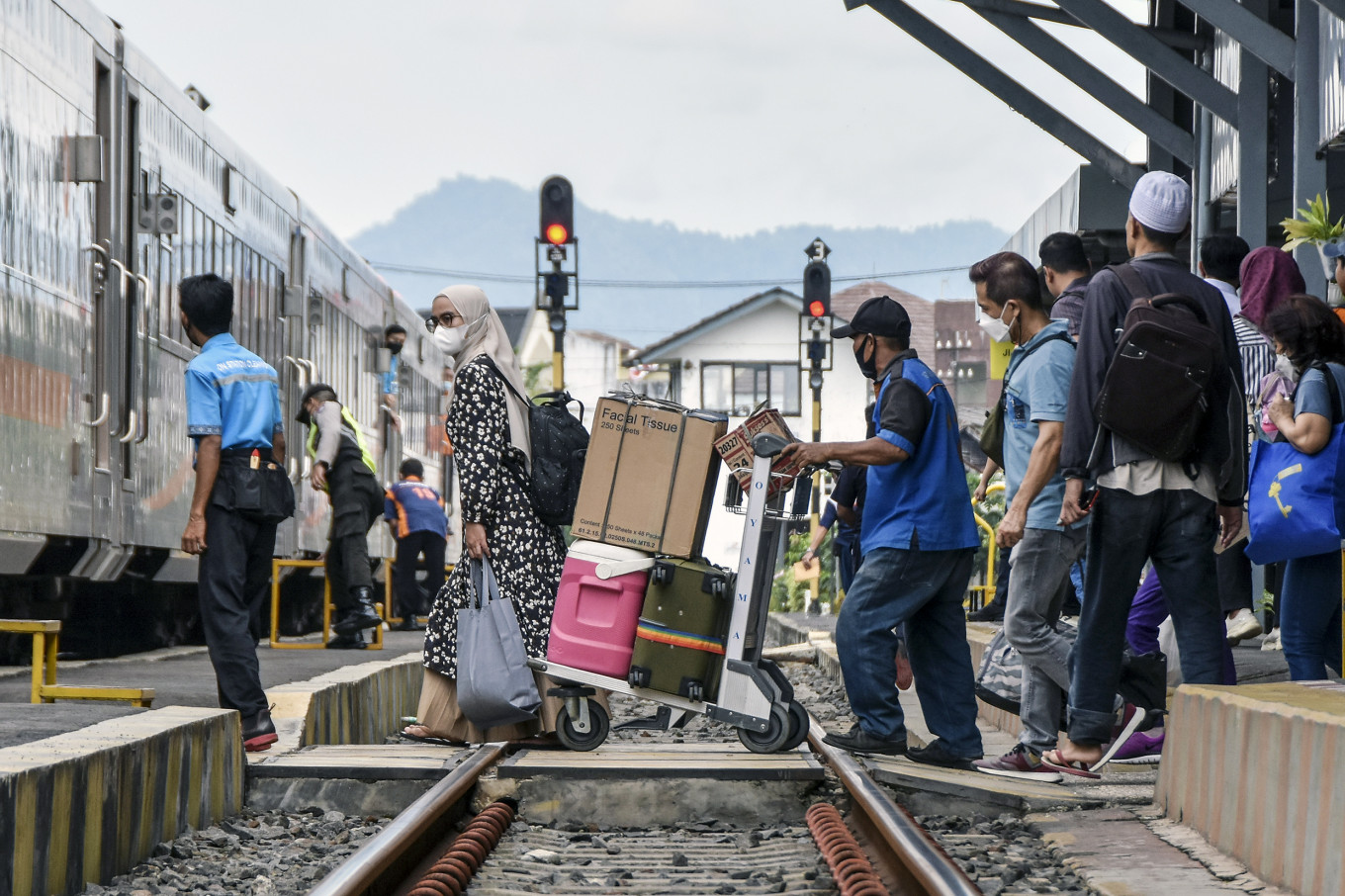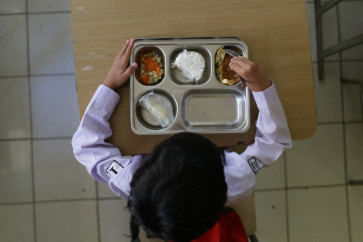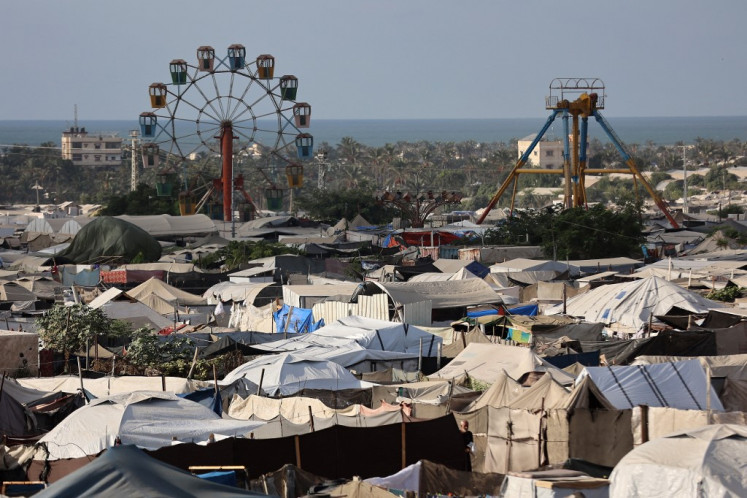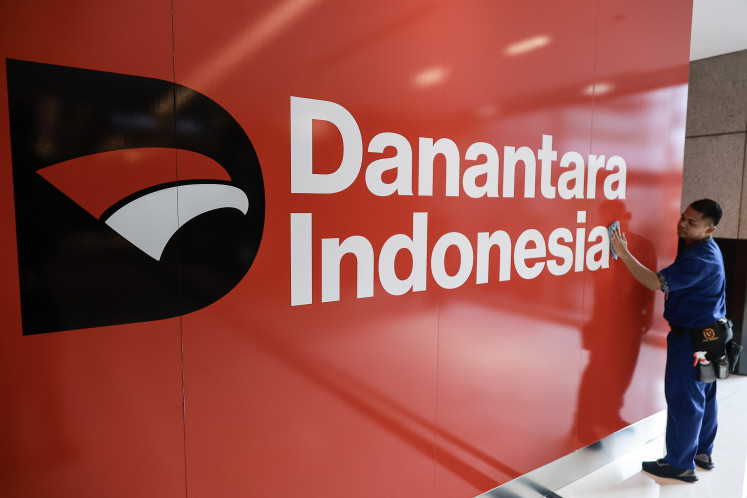Popular Reads
Top Results
Can't find what you're looking for?
View all search resultsPopular Reads
Top Results
Can't find what you're looking for?
View all search resultsCentralized mudik database key for future 'mudik'
Transportation observers are urging the government to set up a centralized mudik information database to accommodate travelers and reduce the public’s reliance on long-distance motorcycle trips.
Change text size
Gift Premium Articles
to Anyone
W
The Transportation Ministry has predicted that some 123.8 million travelers will make the trips in the coming week, accounting for around 45 percent of Indonesia’s total population, and would mark the busiest mudik season in the country’s history.
Indonesia Transportation Society (MTI) has said it was high time the government considered newer solutions to the annual mudik problem.
“We can’t keep being reactionary and rely on ad-hoc solutions, and the government needs a proper road map [to deal with the mudik issue],” MTI chairman Tory Darmantoro told reporters in a media discussion on April 4.
Mudik season, in which millions return to their hometown to celebrate Idul Fitri and reunite with their extended families, is one of the country’s long-standing traditions.
Given the relative predictability of mudik, occurring around the end of Ramadan each year, the government should have been able to anticipate the possible issues arising from mudik, Darmantoro said.
One key issue the MTI has identified in the government’s past handling of mudik is the lack of streamlined responses to the issue. To that end, the MTI has underlined the need for a centralized mudik information database that will act as a hub for public transportation data, real-time traffic updates and other mudik-related information for travelers.
“Imagine if we could access all the information through one platform, and this is why the MTI has been advocating for the creation of a mudik road map,” Darmantoro explained. The MTI chairman added that the Transportation Ministry should be given the authority over mudik management, with the support of the National Police, regional government and other related stakeholders.
MTI head of land transportation forum Aditya Dwi Laksana argued that a centralized mudik database could help inform the people of the various free mudik programs available, which in turn would help discourage travelers from taking their mudik trips on their motorcycles.
“In the past, we’ve seen empty seats in the bus [from free mudik providers] because of double bookings,” Aditya said. “This is why all the various free mudik programs should be put under the umbrella of the Transportation Ministry to optimize the available quota”.
Motorcycles for mudik
Motorcycle use for mudik has long been a problem for Indonesia, and the Transportation Ministry estimates 25 million will undertake their journey by motorcycle this year, or around one-fifth of the total 123.8 million travelers.
Given the associated dangers however, the government has urged the public to explore the available free mudik programs instead. “I humbly request for the public to not conduct long-distance trips on their motorcycles as it is very dangerous”, Transportation Minister Budi Karya Sumadi said in a meeting with the House of Representatives last week.
Data from state-owned traffic insurance company PT Jasa Raharja showed that out of all mudik-related traffic incidents in the past five years, 70 percent involved motorcycles. While the government has provided various free mudik programs, they are all currently organized through different institutions.
The Transportation Ministry and the State-Owned Enterprises (SOE) Ministry, for example, provide their own free mudik services through their own platforms, as is with regional government institutions such as the Jakarta Transportation Agency.
While the available quota seems small compared with the estimates for motorcycle use, with the SOE Ministry providing only around 65,000 seats, MTI believes that the combined number of free mudik programs should be sufficient.
“Not all mudik [journeys] are long-distance trips from Jakarta to Surabaya [in East Java]. Shorter trips from Jakarta to [West Java] also count. And we have many available free mudik services, [including from private companies],” Darmantoro said.
Still, optimizing the available free mudik programs will not be enough as long as motorcycle use for mudik remains permitted. While an outright ban is impossible to be implemented this year, the MTI proposed that a ban on motorcycle use for trips longer than 60 kilometers should be implemented eventually.
“The solution has to be implemented in stages. We could begin by banning motorcycle use for mudik when there are children on board”, MTI secretary-general Haris Muhammadun. “We don’t want this 123.8 million number to create a burden and result in more chaos during mudik”.










